Your smartphone camera offers five powerful focus modes to elevate your mobile photography. Auto Focus uses contrast or phase detection for sharp images, while Tap to Focus lets you control the focal point. Continuous Focus keeps moving subjects crisp, ideal for action shots. Manual Focus gives you precise control, perfect for challenging conditions or creative effects. Face Detection Focus prioritizes human faces, ensuring clear portraits. Each mode has its strengths, so experiment to find what works best for your subject. By mastering these focus techniques, you'll reveal new possibilities and take your mobile photos to the next level.
Auto Focus
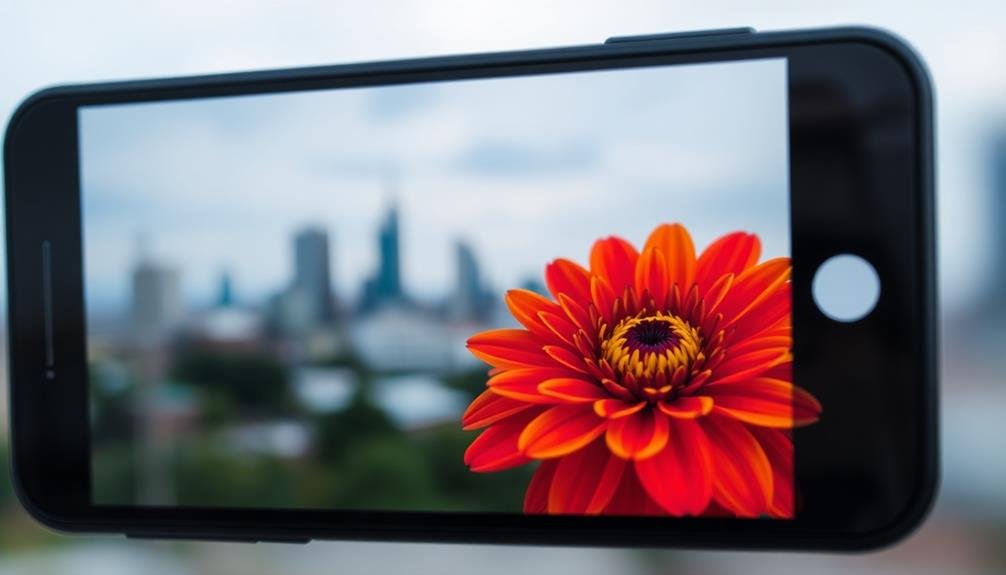
Although most smartphone users rely on it heavily, auto focus is more than just a point-and-shoot feature. It's a sophisticated system that uses contrast detection or phase detection to determine the sharpest focus for your image.
When you tap the screen or press the shutter button, your phone's camera rapidly adjusts its lens to bring the subject into focus.
Auto focus excels in well-lit environments and with subjects that have clear edges or textures. It's particularly useful for capturing spontaneous moments or when you're shooting on the go.
However, it's not infallible. In low light or with fast-moving subjects, auto focus may struggle to lock on quickly or accurately.
To make the most of auto focus, try tapping on your main subject before taking the shot. This tells your camera where to prioritize focus.
For group shots, tap on a face in the middle distance to guarantee everyone's in focus. If you're shooting through glass or a fence, tap on your intended subject to avoid the camera focusing on the foreground obstacle.
Tap to Focus
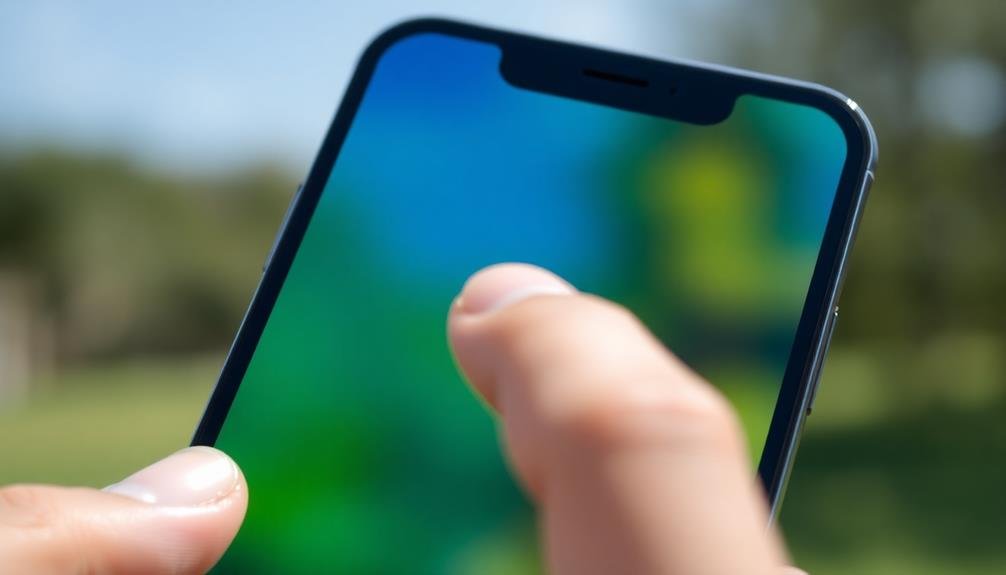
How can you take more control over your smartphone's focus? Enter tap to focus, a feature that puts you in charge of where your camera directs its attention.
This mode allows you to simply tap on the area of your screen where you want the focus to be, overriding the camera's auto-focus decision.
When you're framing a shot, look for the most important element in your composition. Tap on that area, and you'll see the camera adjust its focus accordingly.
This is especially useful when your subject isn't in the center of the frame or when there are multiple objects at different distances.
Tap to focus isn't just about sharpness; it often affects exposure too.
Many smartphones will adjust the brightness based on where you've tapped, ensuring your subject is well-lit. You can use this to your advantage in high-contrast scenes.
Continuous Focus
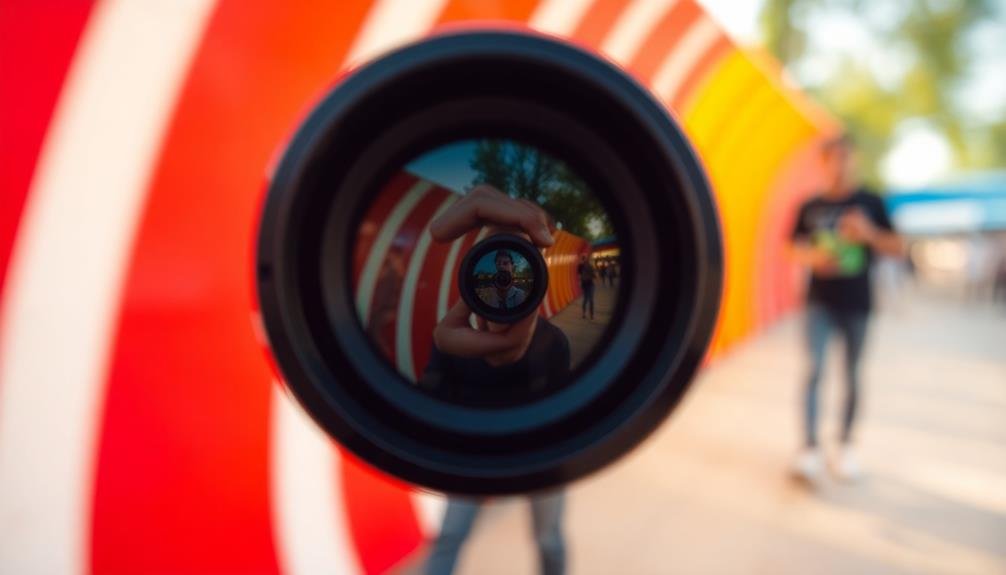
Continuous focus keeps your subject sharp even when it's on the move. This feature is particularly useful when you're photographing active subjects like children, pets, or sports events. As your subject moves, the camera automatically adjusts its focus to maintain sharpness.
To use continuous focus, you'll typically need to enable it in your camera app's settings. Once activated, the camera will constantly analyze the scene and adjust focus as needed. This mode is especially helpful in scenarios where predicting subject movement is challenging.
When using continuous focus, it's important to keep your main subject within the frame. The camera will try to track the subject, but sudden movements or obstructions can cause it to lose focus. For best results, try to anticipate your subject's movements and adjust your composition accordingly.
Continuous focus may drain your battery faster than other focus modes due to its constant processing. It's also worth noting that this mode mightn't be ideal for static subjects or low-light situations, where a single, precise focus point is preferable. In those cases, you might want to switch back to tap-to-focus or auto-focus modes.
Manual Focus
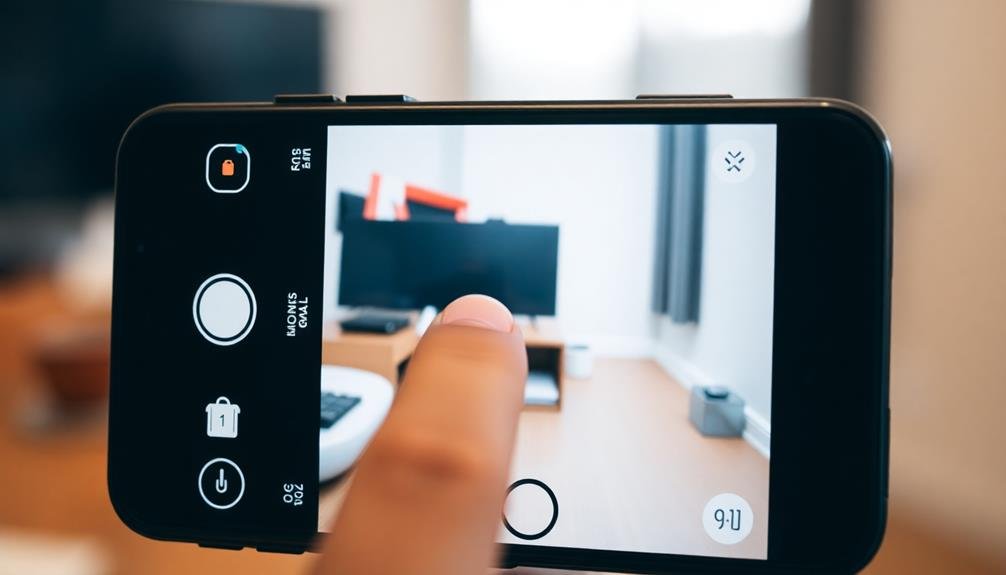
Manual focus puts you in the driver's seat when it comes to sharpening your mobile photos. This mode allows you to bypass your phone's autofocus system and adjust the focus point yourself. It's particularly useful in challenging lighting conditions or when you want to emphasize a specific part of your image.
To use manual focus, you'll typically find a slider or focus ring in your camera app. Adjust this control to shift the focus point closer or further away. As you make changes, you'll see the focus area shift in real-time on your screen. This gives you precise control over which elements appear sharp in your final image.
Manual focus excels in macro photography, low light situations, and when shooting through obstacles like fences or glass. It's also great for creative effects, like deliberately blurring certain parts of your image.
However, it requires practice and patience to master. You'll need a steady hand and a good eye to nail the focus accurately. While it's not always necessary for everyday shots, manual focus can elevate your mobile photography when used strategically.
Don't be afraid to experiment with it to expand your creative possibilities.
Face Detection Focus
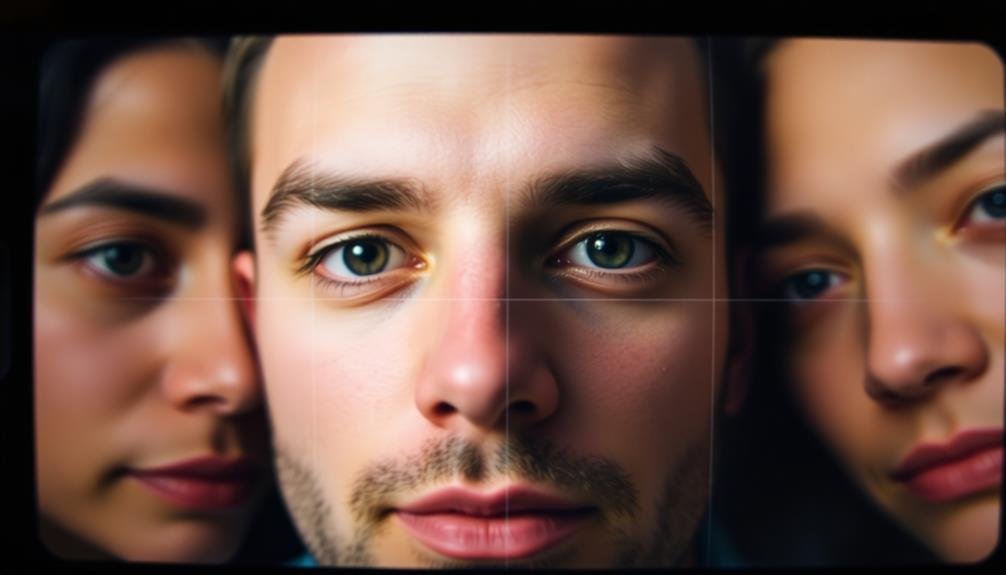
Face detection focus is a game-changer for capturing portraits and group shots with your mobile device. This feature uses advanced algorithms to identify human faces in your frame and automatically adjusts the focus to guarantee they're sharp and clear. When you enable face detection, your camera will prioritize faces over other elements in the scene.
You'll find this mode particularly useful in situations where multiple people are at different distances from the camera. It can detect and focus on several faces simultaneously, ensuring everyone in the group is in focus.
Face detection also works well in challenging lighting conditions, helping you capture crisp facial details even in dimly lit environments.
To use face detection focus, simply activate it in your camera app's settings. Once enabled, you'll often see boxes or indicators appear around detected faces in your viewfinder.
Some advanced smartphones can even recognize specific individuals or prioritize the nearest face. Remember that face detection may not work as effectively for profile shots or partially obscured faces, so you might need to switch to another focus mode in those situations.
Frequently Asked Questions
How Do Different Lighting Conditions Affect Focus Modes?
Different lighting conditions greatly affect your focus modes. In low light, you'll need slower shutter speeds and wider apertures. Bright light allows for faster shutter speeds and smaller apertures. Adjust your focus mode accordingly for sharp images.
Can Focus Modes Be Combined for Better Results?
Yes, you can combine focus modes for better results. You'll often find that using a mix of auto and manual focus, or blending continuous and single-point focus, can help you capture sharper, more dynamic images in various situations.
Do Focus Modes Vary Significantly Between Smartphone Brands?
You'll find focus modes do vary between smartphone brands. While there's some overlap, each manufacturer often includes unique features. It's worth exploring your device's camera app to discover the specific focus options available to you.
How Does Focus Mode Impact Battery Life on Mobile Devices?
You'll find that focus modes generally have a minimal impact on your device's battery life. However, if you're constantly using advanced features like continuous autofocus, you might notice a slight decrease in battery performance over time.
Are There Any Focus Modes Specifically Designed for Action or Sports Photography?
Yes, there are focus modes for action photography. You'll want to use continuous autofocus or AI-based tracking modes. They'll keep moving subjects sharp by constantly adjusting focus. Some phones also offer specific sports or action presets.
In Summary
You've now got the tools to take your mobile photography to the next level. Whether you're shooting landscapes, portraits, or action shots, these five focus modes will help you capture sharper, more professional-looking images. Don't be afraid to experiment with each mode to see what works best for different situations. Remember, practice makes perfect. The more you use these focus techniques, the better your photos will become. So get out there and start shooting!





Leave a Reply